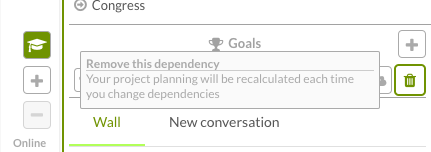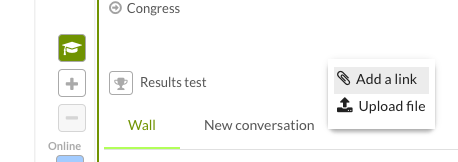The project goals will be our guide in order to define the strategy which we must work with across the project. So, it is vital they fulfil a series of basic characteristics in order to do so.
With the goal of controlling overall project strategy and evolution, we define a series of objectives for each activity such that they help generate value in each task, and aim them towards the original reason behind starting the project. Thus, the goals should be coordinated with project strategy. They will form the basis of this strategy.
If we need to assign genuinely SMART goals, we’ll explain how to do so to improve the likelihood of project success.
WHAT ARE SMART GOALS?
SMART is an acronym of Specific, Measurable, Achievable, Relevant and Time limited. The term was coined in 1981 by consultant and ex-corporate planning manager at the Washington Water Power Company George T. Doran. He published an article entitled ‘There’s a S.M.A.R.T. way to write management‘s goals and objectives’, which explained what the goals of our projects should be.
S – Specific: We are answering ‘what?’. It’s important that there are specific goals which the whole team can understand.
M – Measurable: How are we going to measure them? This will be the way in which we check that we’ve achieved this objective. It will tell us how we’re doing, if we’re doing things well or if we need to make a change in our strategy.
A – Achievable: Being realistic is one of the most vital parts of any planning. Sadly, this doesn’t happen very often, and only when good project management has been effected. In this lesson, we’ll give you some tips on planning in a realistic and objective way.
R – Relevant: Why? The goal should have an over-powering reason for being assigned to the corresponding activity. Sometimes planned goals may not be clear and can’t answer this question. Then, it’s better to remove them.
T – Time limited: When should we complete it? It is essential to place a time limit that helps us complete what we’ve proposed.
If, in addition to these basic characteristics, we add everything that an app can provide to SMART goals, we’ll get comprehensive results, with support documents or external links that will help us understand and achieve these activity goals.
HOW DO I PLAN SMART GOALS USING SINNAPS?
Sinnaps enables goals to be created and validated in the activities. There you can attach the support documents you need, or a URL or link.
Do this by simply going into the activity panel and clicking on it.
Create an goal
We’ll do this by way of the icon highlighted in green in the image below. We’ll write the name and it will be saved in the activity automatically.
Note: to add further goals, we can click on the icon or hit the ENTER key on the keyboard.

Remove an goal
Remove an goal by clicking on the following icon:

Add files and links to an goal
Sinnaps gives you the option of adding documents or links to the goals to provide far more detailed information about them. We’ll achieve this by clicking on the following icon:

We can add a link or attach a file to the goal from our computer.

All we need to do to access information on the goal is click on this goal.

Validate an goal
Once the goal has been completed, we can validate it by clicking on the icon This ![]() automatically turns to yellow.
automatically turns to yellow.
Well done for achieving this! 😉


